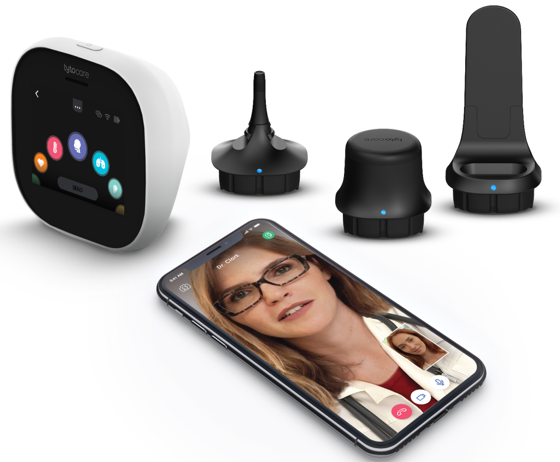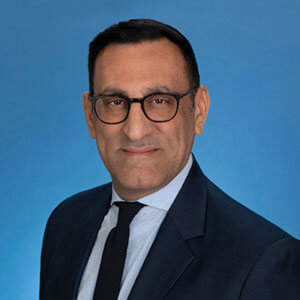Key Points
- Telehealth visits in the US surged by 1,000% in March (IQVIA)
- Streamlining telehealth reimbursement is key
- Patient demand to drive longer-term growth: 36% of users would switch physicians to access telehealth
The Promise of Telehealth
For more than a decade, telehealth has been heralded as the ‘next big thing’ in healthcare. Defined as the delivery of health care, health education, and health information via remote technologies, it promises a number of benefits.
Supplementing or removing in-person diagnosis and care offers cost savings and greater convenience for patients, allows payors to offer enhanced access to care for their members and allows full- and part-time medical professionals to be more efficient with their time.
Indeed, health insurance companies have been investing heavily as a way to bring down the cost of doctor visits, as the average costs for a telehealth session are $100 less than for a typical visit to the doctor's office.
Before the outbreak, the global telehealth market was projected to grow from $25.4 billion in 2020 to $55.6 billion by 2025, at a CAGR of 16.9%. And, for early adopters of telehealth, customer satisfaction ranks among the highest of any consumer category studied by J.D. Power.
But Never Realized
Yet, beyond those early adopters, further nationwide consumer adoption of telehealth has been stubbornly low, with less than 10% of healthcare consumers having used such services.
A significant factor is cost. The five biggest insurers selling Medicare Advantage plans, which serve about one-third of Medicare’s more than 60 million beneficiaries, have offered telehealth for several years. But traditional Medicare set strict limits on what is reimbursed.
There is also the hurdle of cultural change. Busy healthcare providers are traditionally slow at adopting new technologies. Consumers have also been hesitant. Research into senior users of telehealth showed initial reluctance. Nearly 60% of seniors felt in-person office visits would give them a higher quality of care than telehealth could. Other concerns around telehealth included privacy, not feeling a personal connection with the healthcare provider and difficulty using the technology.
Covid-19 Outbreak Is Watershed Moment
Soaring Demand
Not surprisingly, the pandemic has wrought significant change. The majority of healthcare consumers have been unable to visit their doctors, as states have enacted shelter-in-place orders, or are nervous of sitting in crowded waiting rooms. For them, telehealth offers faster diagnoses and reduced stress, while reducing pressure on providers
During March, telehealth appointments in the US surged by over 1,000% week-on-week amid the coronavirus pandemic, according to IQVIA. Today, 48% of clinicians are using telehealth to treat clients, compared to 18% before the outbreak. By year end, virtual health-care interactions in the US are on pace to top one billion according to Forrester Research.
Telehealth provider Teladoc Health, which contracts with 30 of the 50 largest US health systems, reported a 92% increase in visits in the first quarter of 2020. Daily appointments jumped to 20,000, double the number in early March, and 6 million new members were onboarded.
According to Doctor on Demand chief medical officer Ian Tong, “There honestly wasn’t much change from 2008, when I started, to really up until very recently. Then all of a sudden, not only have patients done this for the first time, but this is literally the first time that most doctors have had to even to think about it and were literally forced to change their models—in some cases overnight.”
Revenues and Investments Follow
For the first quarter of 2020, Teladoc saw a 41% jump in revenues to $180.8 million, with paid membership rising 61% to 43 million. Teladoc recently closed a $1 billion convertible senior note sale at an interest rate of only 1.25% (May 2020).
And a surge of funding has flowed into private companies. Teladoc competitor Amwell raised $194m in series C capital, and KHealth and 98point6 raised $100m between them to bring AI into telehealth.
“Telehealth is going to be for everything, that’s the corner that we’re turning right now.”
- Dr Roy Schoenberg, Founder and CEO, Amwell
Reimbursement Is the Key
A facilitator of uptake has been the change in long-standing reimbursement rules. Providers describe how years of policy disagreements have been resolved in a matter of weeks.
The Centers for Medicare and Medicaid Services (CMS) announced Medicare and Medicaid are able to pay for telehealth visits the same way as in-person visits. A range of healthcare providers such as doctors, nurse practitioners, clinical psychologists and licensed clinical social workers will be able to offer telehealth to Medicare beneficiaries. It is a significant move as the two government programs combine to cover about a third of Americans.
At the same time, most large health insurers like Anthem and Aetna have waived cost-sharing for telehealth, including those for mental health, in the hope customers become comfortable with the service.
Other Regulations Make Way
The announcement was also followed by a raft of other amendments to support uptake of telehealth. The U.S. Department of Health & Human Services (HHS) did away with a Medicare requirement that doctors have to be licensed in the same state where they are offering telehealth services to a patient, and a relaxation of security and privacy considerations for what technology doctors can use have also been changed, with doctors now permitted to use apps such as FaceTime, Skype or Zoom for virtual care. The Drug Enforcement Administration has also loosened remote prescribing restrictions. For a full 50 state tracker of legislation changes see here.
Will This Change for the Long-Term?
Many of these changes have been born out of short-term necessity. The debate has now shifted to whether they will endure as the pandemic subsides.
A big question is whether insurance companies will continue to cover telehealth at the same rate as in-person care, a particular concern for smaller practices. It presents a chicken-and-egg dilemma: insurers may need to see evidence of steady demand post-pandemic to make coverage worthwhile. But such steady demand could depend on continued insurance coverage.
A useful indicator of this level of future demand is the underlying uptake patterns of telehealth during the crisis.
An Inevitable Plateau
Telehealth visits are starting to plateau and in some cases decline in popularity as doctor's offices reschedule backlogged patients for more in-person appointments. According to data from The Commonwealth Fund, telehealth visits accounted for 14% of total visits the week of April 19, but that number dropped to 13% the next week and 12% the week after that, a level they’ve held at.
Primary care practices, especially, are grappling with telehealth's limitations. Minor procedures involving sutures and stitches, for example, are revenue-driving care services that can't be done virtually.
Consumer Attitudes to Telehealth Improve
But what underlies headline figures is a gradual shift in underlying attitudes to telehealth.
A March poll from Blackbook Market Research found that 59% of US consumers said they are more likely to use telehealth now than before the pandemic and 36% would switch physicians if it meant they had access to virtual care. It is this shift in patient demand that is most likely to dive the future growth of telehealth.
"If I look out five years, I would say virtual care becomes ubiquitous, and that offers tremendous opportunities for us."
- Teladoc CEO Jason Gorevic
Of particular interest is the adoption trends in specific groups:
New users: Teladoc reported that over 60% of the visits they received were from new users, a positive sign for the vendor as patients who've used telehealth once are much more likely to do so again.
Specialist users: General medical visit growth was outpaced by growth in specialist visits, which tripled in the quarter. Teladoc was particularly encouraged by the growth in behavioral health visits, as they have high repeat usage and potential to drive visit volume throughout the year.
Senior users: Given that almost 45 million Medicare beneficiaries are aged 65 or older, the hope is that the payment parity will make it easier for seniors to test out their platform and keep using it for low-acuity visits once the national emergency has passed. And according to CMS, fee-for-service Medicare beneficiaries used telehealth more than double the rate of the commercial population.
"If I look out five years, I would say virtual care becomes ubiquitous," says Teladoc CEO Jason Gorevic. "And that offers tremendous opportunities for us."
Insurers Expectations of Telehealth
Insurers appear to have high expectations for telehealth's continued growth as well. "We believe telehealth will continue to be a critical tool as we face the pandemic and, as a result, a more accepted option for care in the future," said a spokesperson for Aetna. "We think this will be true for all health needs, including mental health and wellbeing services."
The Thin End of a Digital Ecosystem
It’s important to view the current use of tele-consultation as only the front-end of an increasingly digital healthcare ecosystem.
As Amwell founder and CEO Dr Roy Schoenberg says; “We’re now looking at health in the same lens as when people bought books from Amazon, because that was the only thing Amazon was selling. But we completely failed to understand the dramatic impact of online retail, which was championed by Amazon.”
Such technologies could include peripheral biometric technologies like connected glucose meters, and pulse oximeters, to help patients with pulmonary disease to be treated remotely.
For example, the diabetes management company One Drop sells a kit and app for measuring blood sugar levels and reporting the data to a doctor or other caregiver. TytoCare makes a handheld health monitoring device that includes a stethoscope, otoscope, thermometer, and a special camera. Data collected by the device is sent in real time to a doctor video-chatting with you on a companion smartphone app.

As Dr Schoeonberg says, “Telehealth is going to be for everything, that’s the corner that we’re turning right now.”

 Start Watching
Start Watching

